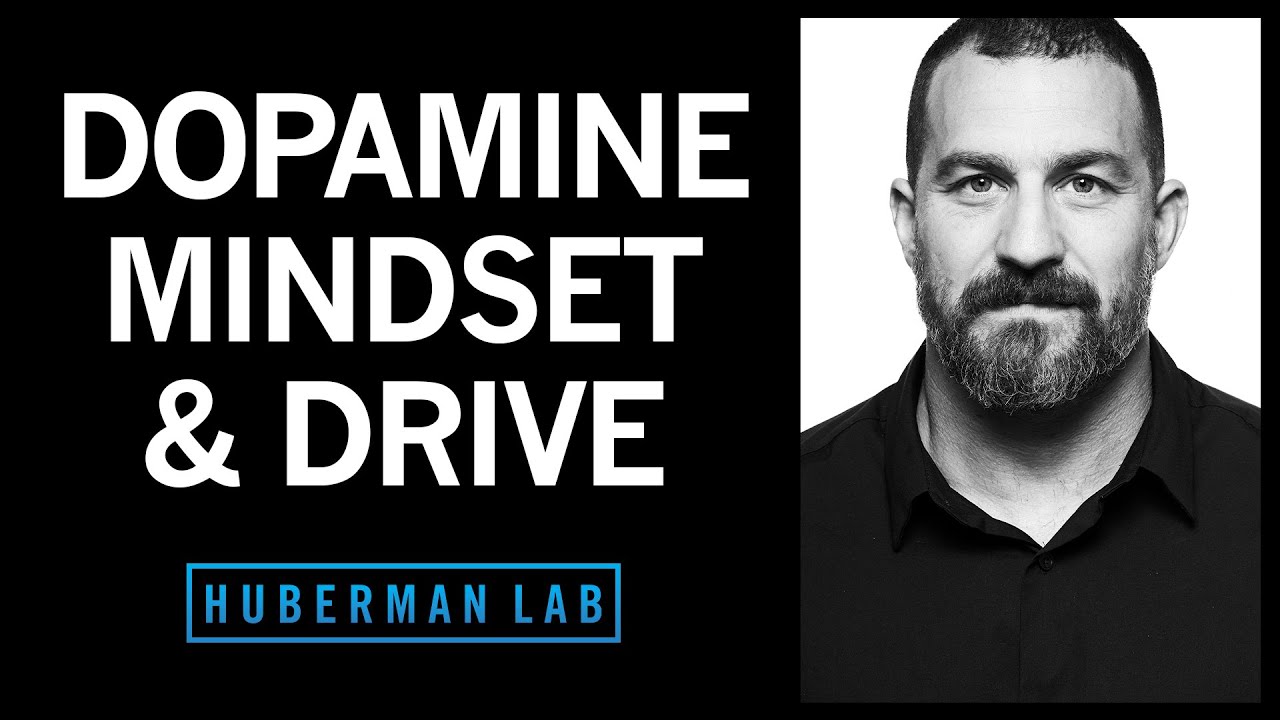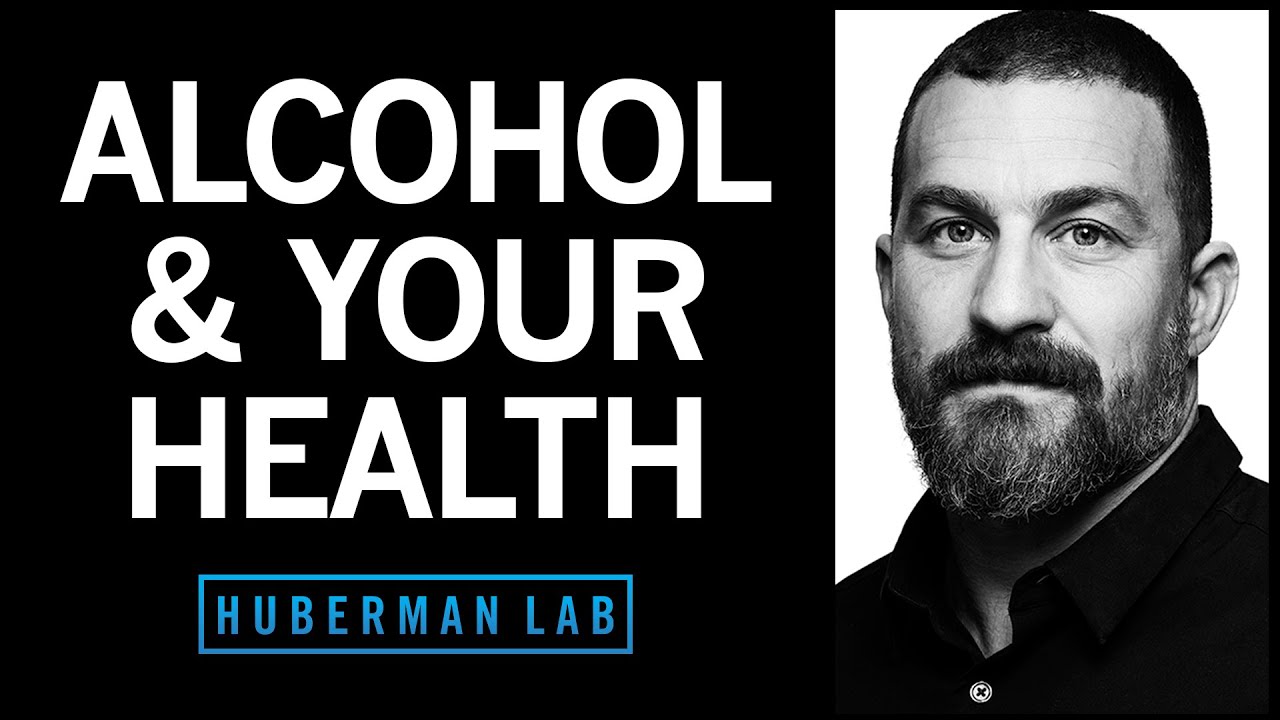- Dopamine is a neuromodulator that affects mood, motivation, and perception of time. Levels vary, influencing emotions, drive, and responses to environment.
- Dopamine travels in the brain via two main pathways, influencing movement, motivation, and craving. It is released in both localized and broad (volumetric) ways.
- Managing dopamine is key to sustaining happiness and avoiding cravings/addictions. This involves balancing pleasurable activities and understanding the pleasure-pain cycle related to dopamine.
- Various stimuli, including energy drinks, drugs, and caffeine, can influence dopamine levels. While some might provide a temporary boost, chronic use can lead to challenges with motivation and drive.
- Interactions with other biological systems, including intermittent fasting, melatonin, oxytocin, and cultivating a growth mindset, can influence dopamine pathways and overall wellbeing. Non-prescription supplements can also affect dopamine levels.
Take Charge of Your Dopamine Levels to Elevate Motivation, Focus and Satisfaction
Take Charge of Your Dopamine Levels to Elevate Motivation, Focus and Satisfaction

- Activities like classes, relationships, and pursuits help you experience a natural ebb and flow of dopamine release.
- Set a goal to achieve intermittent reinforcement schedules to maintain a healthy baseline of dopamine while still achieving pleasure and motivation from the activity.
- Consume energy drinks, pre-workout drinks, and drugs in moderation. They can undermine your ability to stay motivated and focused.
- Caffeine and yerba mate may be beneficial in increasing dopamine.
- The act of consciously acknowledging the benefits of intermittent fasting can actually enhance the positive effects it has on your body, potentially through the release of dopamine.
- Dim lights at night and avoid exogenous melatonin to maintain healthy levels of dopamine.
- Pursue healthy social connections to keep dopamine pathways functioning properly.
- Accessing dopamine while in effort can increase the amount of energy in your body and mind, and your ability to focus.
Introduction to dopamine
Dopamine is a neuromodulator, which coordinates between your external environment and internal state. Picture a coordinated dance involving twenty or hundreds of people. Neuromodulators are coordinating that dance. In the body, they coordinate several things at once. So, they’re not only affecting your mood but also your motivation and drive.
Dopamine also controls your perception of time. It can be important in avoiding cravings and addictions, and sustaining happiness over long periods of time.
The body has a baseline level of dopamine. In neuroscience, this is referred to as tonic release. You can experience peaks in dopamine above this minimum level, what is known as the phasic release. After a big peak in dopamine, its level drops.
When you feel lazy or lethargic, or have no drive or motivation, you’re in a low dopamine state. If you’re excited or motivated or even fearful, you’re in a high dopamine state. In an in-between level, how you feel depends on whether you had a higher or lower dopamine level a few minutes ago.
Image 1: Dopamine and serotonin pathways (source: https://commons.wikimedia.org/wiki/File:Dopamine_and_serotonin_pathways.png)
How does dopamine travel in your body?
The brain has two main neural networks that use dopamine. It goes from the bottom of the brain or the central tegmentum to the ventral striatum and the prefrontal cortex, which is called the mesocorticolimbic pathway. Let’s call it the movement pathway. The pathway is how dopamine affects motivation, drive, and craving. When you pursue someone or something, you’re tapping into the mesocorticolimbic pathway or the reward pathway. Let’s call it the motivation and craving pathway.
The other pathway comes out from an area of the brain called the substantia nigra, which is named for the dark cells here. The substantia nigra connects to an area of the brain called the dorsal striatum. This is the nigrostriatal pathway.
Dopamine can be released in the brain and body in a local or broad way. This is better understood by knowing what synapses are. Synapses are the small spaces between neurons. They’re the junctions at which neuron nerve cells communicate with each other and make one other more electrically active or less. Dopamine also acts in a similar fashion, making one neuron influence another in what is called synaptic release. In addition, dopamine also functions through a volume metric release, which can be imagined as a giant vomit that can release anywhere from 50 to thousands of cells. This is called volumetric release, a full dopamine dump into your system.
How does it manifest in your life? If you take a supplement or a drug that boosts your dopamine level, your body will experience local and volumetric release. You already know that a peak in dopamine level is followed by a drop. When you take a supplement or a drug, you’re getting a local release and a volumetric release, with a smaller difference between the peak and baseline. So, even as the drugs and supplements increase your dopamine level, your body is unable to sustain the release over long periods of time and to achieve those peaks you crave.
The good news is that you can increase your dopamine without the elevation having to be short lived. You will be able to control your dopamine release to maximize your motivation and drive.
How dopamine is related to the pleasure-pain balance
Pleasure is a result of dopamine release, which happens when engaging in an activity or ingesting something that increases dopamine levels in the brain. The pain comes from a lack of dopamine that follows after the initial pleasure response. The pain response occurs as the brain craves the initial reward again. Understanding this cycle is crucial to balance pleasure and pain in a sustainable way.
What can lead to a depletion of dopamine levels? If you derive excitement from a particular behavior, you may lose interest in other aspects of your life, leading to a depletion of dopamine. Engaging in multiple activities that release dopamine can lead to a depletion of dopamine levels over time. When dopamine levels progressively decrease, you may feel burnt out and experience a drop in energy.
How to avoid depleting your dopamine levels
Use intermittent reinforcement schedules in achieving pleasure and motivation for activities. Some activities naturally have an intermittent property woven into them, such as classes, relationships, and pursuits, which allow you to experience a natural ebb and flow of dopamine release.
Avoid expecting dopamine to arrive through exogenous sources, such as supplements or drinks, and instead focus on naturally experiencing the peaks and baselines of dopamine release. In doing so, you can maintain motivation for school, exercise, relationships, or pursuits of any kind, as long as the peak in dopamine, if it’s very high, doesn’t occur too often.
To achieve the optimal dopamine release from an activity like exercise, layer different pleasurable stimuli, such as listening to music, having a favorite drink, and such. At the same time, layering too many pleasurable stimuli may increase the number of conditions required to achieve pleasure from that activity again. Also consider the potential negative impact of smartphones in layering activities like workouts. They can be distracting, causing you to lose focus and making activities less pleasurable,
Set a goal to achieve intermittent reinforcement schedules by varying the degree and frequency of dopamine release from an activity. This can help to maintain a healthy baseline of dopamine while still achieving pleasure and motivation from the activity.
Here’s a method you can use. Flip a coin before engaging in an activity to decide whether or not to allow other dopamine-supportive elements, such as music, to be involved.
All of this said, the ability to experience motivation and pleasure for what comes next is dictated by how much dopamine you experienced prior, and the whole basis of intermittent reinforcement is that there is no specific schedule of when dopamine is going to be high, low, or medium. So there is no specific protocol for lowering dopamine every third time. This reinforces the importance of balancing dopamine peaks and baselines through engaging in activities with natural intermittent reinforcement.
| Do’s | Dont’s |
| Balance various activities that release dopamine, including food and alcohol | Chase high levels of dopamine release every time you engage in pleasurable activities |
| Engage in activities that produce intermittent peaks of dopamine | Add too many pleasurable stimuli |
| Adjust your expectations and optimise your engagement with dopamine-evoking activities | Overuse smartphones or other digital technology that can disrupt or lower baseline levels of dopamine |
Impact of energy drinks, drugs, and caffeine on dopamine
Energy drinks, pre-workout drinks, and drugs (such as Adderall, Ritalin, armodafinil, and modafinil) contain precursors to dopamine. Consuming them will cause the release of dopamine to a substantial degree, even if you don’t engage in any activities, and over time, this will deplete your dopamine. While they have clinical uses, taking stimulants and then engaging in activities that you want to continue feeling pleasure in will eventually lead to challenges with motivation and drive.
You could consume these compounds in moderation, but if you strive for peak motivation, drive, and focus, they will ultimately undermine your ability to stay motivated and focused. The best approach is to intermittently spike dopamine through intermittent reward schedules, but chronically trying to spike dopamine in order to enhance motivation, focus, and drive will eventually lead to the opposite effect.
The effects of Huperzine A on dopamine are also worth noting. Huperzine A can lead to increases in dopamine in the areas of the brain associated with learning, memory, decision-making, and focus.
Caffeine can actually increase the density and efficacy of dopamine receptors. The source of caffeine could also matter, as coffee, tea, or other forms of caffeine can also increase dopamine receptors. Yerba mate, a beverage that contains caffeine, may be beneficial in increasing dopamine while also enjoying the neuroprotective properties of yerba mate.
Caffeine can be dangerous in one specific context related to dopamine, which is related to MDMA (ecstasy).Whether or not MDMA is neurotoxic is controversial, but studies suggest that caffeine can increase the toxicity of MDMA receptors. MDMA is a potent drug for increasing concentrations of dopamine, serotonin, and other neuromodulators. Caffeine increases the density and efficacy of dopamine receptors, specifically D2 and D3 receptors, leading to more toxicity of MDMA. So, caffeine can be beneficial in one context but detrimental and dangerous in another.
Dopamine and intermittent fasting
When, deep into your fast, you tell yourself that your blood lipid profiles, glucose management, and insulin sensitivity are likely improving, it enhances the rewarding properties of the behavior of fasting. Fasting encourages things like autophagy, the engulfment of dead cells, which have some basis in animal studies and emerging human studies that suggest fasting can extend lifespan. This is an example of how knowledge can help change deep, primitive circuits related to dopamine. The forebrain, which carries knowledge, interpretation, and rational thought can be used to shape the circuits involved in generating reward for behaviors that would otherwise be hardwired and primitive.
Dopamine and melatonin
While melatonin is not often thought about as impacting the dopamine pathway, a study found a statistically significant decrease in dopamine 60 minutes after melatonin administration. Although the study wasn’t specifically about dopamine, it did look at norepinephrine and dopamine levels. Viewing bright lights between the hours of 10:00 p.m. and 4:00 a.m. has been shown to reduce levels of dopamine for several days after that light exposure. Based on these findings, you can consider dimming lights at night and avoiding exogenous melatonin if possible in order to maintain healthy levels of dopamine.
Oxytocin and social connections influence dopamine pathways
Oxytocin is released from close social interactions such as romantic or parent-child relationships. This result emphasizes the importance of social connections in stimulating the dopamine pathway for seeking and reward, and to prioritize quality and healthy social interactions that evoke oxytocin release. Close social connections can include romantic, parent-child, and friendship relationships, even long-distance ones, as skin contact is not required to trigger oxytocin release. The take-home message is clear: pursue healthy social connections for the benefit of the dopamine pathway.
Cultivating a growth mindset
When you engage in an activity solely for the reward at the end, you experience less and less pleasure from the activity itself over time. This is the opposite of a growth mindset, which involves striving to be better and finding pleasure in the effort and doing. People with a growth mindset tend to perform well because they focus on the effort itself. Cultivating a growth mindset can be challenging as it requires learning to find pleasure in effort even when it comes with physical pain or discomfort.
Over time, you can start to associate a dopamine release with the friction and challenge you face during an activity. However, if you’re only focused on the goal that comes at the end of the activity, you eliminate the ability to reward friction while in effort. Dopamine marks time, and focusing solely on the end goal can make the process of the activity less enjoyable and more painful, and makes you less efficient at it. If you’re able to access dopamine while in effort, it has properties of increasing the amount of energy in your body and mind, and your ability to focus.
You completely eliminate the ability to generate those circuits and the rewarding process of being able to reward friction while in effort, if you are focused only on the goal that comes at the end.
Non-prescription supplements that increase dopamine levels
Macuna Pruriens, a velvety bean whose contents are l-DOPA, can lead to very large and intense transient increases in dopamine. It has been found to reduce symptoms of Parkinson’s disease, similar to the effects of L-DOPA, and can also reduce the hormone prolactin, which is involved in milk letdown in women and setting the refractory period for sex after ejaculation in males. Macuna Pruriens can increase sperm concentration, quality, and motility, making it an interesting choice if you seek to conceive children. However, as a direct precursor to dopamine, it can inevitably lead to a crash or reduction in the baseline dopamine levels.
The other is L-tyrosine, an amino acid precursor to l-DOPA sold over the counter in the United States and is commonly taken in capsule or powder form by those seeking more energy, alertness, and focus. L-tyrosine is a potent stimulus for increasing dopamine levels, with the peak occurring about 30 to 45 minutes after ingestion. There is data supporting L-tyrosine’s ability to provide these benefits.


